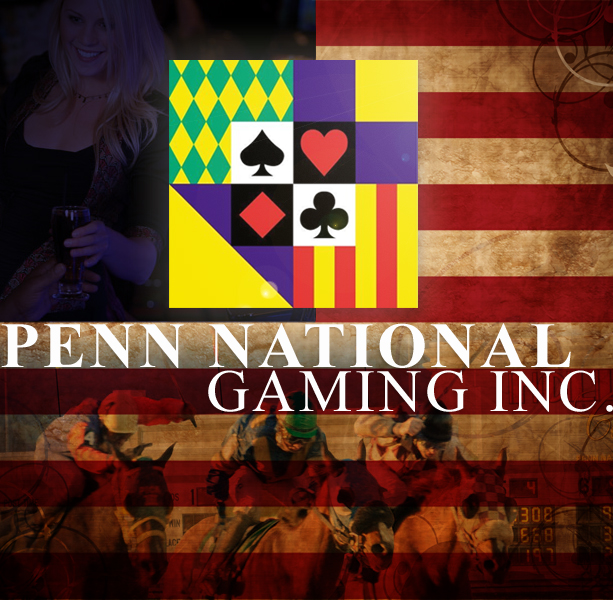Penn National Gaming (PENN) released third quarter earnings this week, beating analyst estimates on earnings and raising its full-year guidance for revenues. The stock rose on the news in trading Thursday, though it then fell more than 2% amidst Friday’s sharp broad market drop.
Penn’s numbers, however, are less interesting than its management commentary on the post-earnings conference call, held amidst a turbulent legal and economic backdrop. Notably, Penn is embroiled in a high-stakes political battle in Maryland, where the company has, as of Thursday, spent some $30 million lobbying against Question 7, which would authorize both table games and a sixth casino in the state. On the other side is MGM Resorts International (MGM), which is looking to build an $800 million resort at the National Harbor near Washington, D.C. As Baltimore’s WBAL reported, total spending on Question 7 alone now dwarfs the total amount spent in the 2006 governor’s race in the state, a close contest which resulted in the election of current governor Martin O’Malley.
 Penn National has a dual interest in the Maryland referendum; its Rosecroft Raceway is a competing bidder for the sixth casino license. But Penn has claimed that the bidding process was essentially rigged; though it plans to compete for the license if Question 7 is passed, Penn management clearly feels MGM’s syndicate will be the likely bidder. The referendum will also impact Penn’s casino at the Charles Town race track in eastern West Virginia, a long-time destination for Maryland gamblers. That operation would clearly benefit from rejection of Question 7, as Charles Town remains the closest destination for many Marylanders interested in playing table games, games currently unavailable in the state. On the conference call, president and chief operating officer Timothy Wilmott denied Penn’s intent to protect Charles Town, telling an analyst that “Question 7 really has nothing to do with Charles Town.” But given the potential effect of a DC-area casino on the West Virginia operations – especially if that new facility is not a Penn property – that seems unlikely. And given the scale of Penn’s lobbying, it seems even less likely that the company would spend $30 million solely on what appears to be a doomed effort to secure a license for Rosecroft.
Penn National has a dual interest in the Maryland referendum; its Rosecroft Raceway is a competing bidder for the sixth casino license. But Penn has claimed that the bidding process was essentially rigged; though it plans to compete for the license if Question 7 is passed, Penn management clearly feels MGM’s syndicate will be the likely bidder. The referendum will also impact Penn’s casino at the Charles Town race track in eastern West Virginia, a long-time destination for Maryland gamblers. That operation would clearly benefit from rejection of Question 7, as Charles Town remains the closest destination for many Marylanders interested in playing table games, games currently unavailable in the state. On the conference call, president and chief operating officer Timothy Wilmott denied Penn’s intent to protect Charles Town, telling an analyst that “Question 7 really has nothing to do with Charles Town.” But given the potential effect of a DC-area casino on the West Virginia operations – especially if that new facility is not a Penn property – that seems unlikely. And given the scale of Penn’s lobbying, it seems even less likely that the company would spend $30 million solely on what appears to be a doomed effort to secure a license for Rosecroft.
Penn’s protective efforts toward its West Virginia property would certainly make sense; cannibalization remains a major issue across the US. Penn is certainly not immune. Analysts on the conference call showed concern about the effects of new properties not just on Penn’s Charles Town racino, but its operations in Indiana (threatened by new casinos in Ohio, including Penn properties in Toledo and Columbus) and Louisiana (where Penn’s Hollywood Casino faces a new competitor from Pinnacle Entertainment’s (PNK) L’Auberge casino). In response to a question from Nomura Securities analyst Harry Curtis, CFO William Clifford noted the potential competition for Massachusetts casinos from potential entrants in Connecticut. Yet Connecticut has no formal go-ahead to expand gambling beyond its two current tribal casinos; and, of course, Penn doesn’t even have a casino in the state, simply a proposal for a site in Springfield submitted earlier this month. The fact that analysts and executives are already contemplating cannibalization in markets that don’t even exist yet shows just what a key issue it is for US operators.
The other problem, as Curtis noted in his question, is that companies like Penn looking to escape crowded markets don’t have anywhere else to go, at least not if they want to make money. Curtis told the executives “my concern is that the winner of that site is ultimately going to be the loser,” in asking about the risk of overpaying for one of four approved locations in Massachusetts. CEO Peter Carlino seemed to agree, telling Curtis that “Massachusetts is really suboptimized legislation in this area. I mean, the state could have been much better balanced.” In reference to dealing with city officials in Springfield, Carlino also predicted “there is potential for some ugliness.” He concluded that “if we think this is worth winning, we intend to win it. If we come to the conclusion that it’s not worth winning, we’ll intend to lose it,” which is hardly a ringing endorsement of the profit potential for the eventual Massachusetts licensees.
Later in the call, Wilmott and VP Eric Schippers discussed two potential new markets: Ontario – where Penn already has a casino in Rama – and Texas. Penn excluded Toronto from any Canadian expansion plans, with Wilmott estimating that “to compete in that market [would require] multiple billions” of dollars. With Toronto’s plans still up in the air, Penn National has adopted a “wait-and-see” posture toward potential expansion elsewhere in the province. In Texas, Schippers noted the company’s long-running lobbying efforts to bring gambling legalization to a state-wide referendum. Those plans have so far been stymied by long-serving governor Rick Perry. Perry has received multiple six-figure campaign contributions from the Chickasaw Nation of Oklahoma, who operates Winstar World Casino, the second-largest casino in the world, located right on the Oklahoma-Texas border. Those funds likely explain Perry’s refusal to allow gambling in the state, beyond the state lottery and racetracks including Penn National’s Sam Houston and Valley Race Park.
There does seem to a possibility for a company to grow through acquisitions. Indeed, Penn will close next month on its $610 million purchase of Harrah’s St. Louis from Caesars. Penn has net debt below $2 billion, giving it a much cleaner balance sheet than debt-heavy competitors like Caesars, MGM, and Isle of Capri (ISLE). The need for some of those companies to divest assets to pay off debt – or, potentially, simply to make interest payments – may allow Penn to use its financial flexibility to make similarly opportunistic purchases. In a response to another question from Curtis about whether there was “buyers’ or seller’s market,” CFO Clifford appeared to side with the buyers. “It does appear that the sellers of assets have started to recognize the new normal,” Clifford told the analyst. “And so there’s not this expectation that their business is still operating at ’07 EBITDA levels. And that does seem to indicate that there is [sic] more willing sellers at more reasonable prices.”
Of course, Clifford’s comment brings into question the value of his own company, because, as he notes, the US casino business has not returned to its pre-crash performance. (Neither has PENN’s share price, which is still off one-third from its all-time high set in 2007.) The company itself saw so-called “same-store sales” – gambling win at existing locations – drop 2% year-over-year, according to analyst Matthew Cole. In response to Cole’s question about expectations for 2013, Penn executives were far from optimistic. COO Wilmott opened by telling the analyst, “Generally, I characterize our businesses that have not been impacted by new supplies [as] generally flat,” adding that both visitor numbers and visitor spend were largely unchanged from the year before. “We’re not seeing any turnarounds in any meaningful way,” he summarized. CFO Clifford agreed. “Nobody’s projecting or feels comfortable that we’re going to get a hockey stick recovery” – in which revenues jump sharply after a period of flat growth, with the graph resembling the blade of a hockey stick – “nor do they feel like we’re going to see any kind of significant downturn.” Later, asked about the Las Vegas market, where Penn operates the M Resort, Wilmott again predicted limited growth. “We don’t see any kind of robust recovery in Las Vegas right now…The general economic conditions for 2013, I think, are going to be very similar to what we saw in 2011 and 2012.”
To be fair, there was some optimism on the call. Penn executives repeatedly noted that promotional spending across the industry was “rational,” as neither Penn nor its competitors were destroying margins by expanding giveaways. CEO Peter Carlino twice emphasized that his company would stay “disciplined” in the face of the challenges facing the industry. Overall, Penn executives gave the sense that they were aware of the challenges, and felt that could manage the business well, cutting costs and making cautious, careful investments to navigate a stagnant market. PENN stock has been a strong performer over the long term, and the company industry-best balance sheet and competitive position show the long-term success of Penn National’s management. Carlino himself has been at the helm for eighteen years, and certainly deserves credit for much of Penn’s success over the time.
Management matters, as I’ve emphasized over the last two weeks. But the question: is it enough, given the economic, legal, and political challenges facing domestic casino operators? At Friday’s close of $41.98, PENN is trading at nearly 18 times the company’s guided 2012 earnings per share of $2.37. At those levels, the stock price simply cannot go up very much without earnings growth. Penn management can continue to execute, and can create some incremental improvement in profits by controlling costs and growing its new locations. The problem is: every other casino in the United States is trying to do the same thing, often at Penn’s expense. Even though Penn National appears to be the best-in-breed regional operator, at its current share price, it doesn’t look like that will be enough.
